LGBTQIA+ Abuse and Homelessness

If you or someone you know is experiencing abuse in our community, call Arlington’s 24-hour Domestic & Sexual Violence Hotline 703-237-0881 for information and support. You can also contact Virginia’s LGBTQ Partner Abuse and Sexual Assault Helpline: 866-356-6998 / Text: 804-793-9999 / Chat (confidential instant messaging).
Although domestic violence, sexual assault and homelessness can and do impact everyone, those who are LGBTQIA+ are even more likely to experience one or more of these traumas in their lifetime. Furthermore, for LGBTQIA+ adults, youth and kids, homophobia and transphobia put people at higher risk of abuse and homelessness, and compound violence and instability.
Learn more in each of these sections below:
- LGBTQIA+ people are more likely to experience domestic and sexual violence
- Homophobia and transphobia compound abuse
- LGBTQIA+ youth comprise a significant portion of the homeless population
- Race, immigration status, disability status, and more make LGBTQIA+ people even more vulnerable
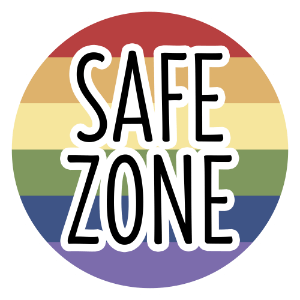 Doorways is committed to creating an environment that provides culturally competent and inclusive services that are non-stigmatizing to all clients regardless of race, ethnicity, sexual orientation, sex, gender and gender identity or expression, religion, national origin, age, or disability, as well as to others from diverse backgrounds. Learn more.
Doorways is committed to creating an environment that provides culturally competent and inclusive services that are non-stigmatizing to all clients regardless of race, ethnicity, sexual orientation, sex, gender and gender identity or expression, religion, national origin, age, or disability, as well as to others from diverse backgrounds. Learn more.
LGBTQIA+ people are more likely to experience domestic and sexual violence
However, due to underreporting and other factors, such as lack of LGBTQ+ competent resources and (perceived or actual) safety risks, the numbers vary and may be underestimated.
“Lack of inclusiveness allows for the persistence of myths that, for example, men cannot be victims of intimate partner violence, or that women cannot be violent to their partners. Moreover, these myths further marginalize LGBTQ survivors who may already be more reluctant to report their abuse or access counseling and other resources because they fear being discriminated against or outed as LGBTQ.” —Human Rights Campaign
Violence against lesbian, gay and bisexual people
- Bisexual women had significantly higher lifetime prevalence of rape and sexual violence other than rape by any perpetrator when compared to both lesbian
and heterosexual women. Bisexual women had significantly higher lifetime prevalence of rape, physical violence, and/or stalking by an intimate partner
when compared to both lesbian and heterosexual women. Lesbian women and gay men reported levels of intimate partner violence and sexual violence equal to or higher than those of heterosexuals (The National Intimate Partner and Sexual Violence Survey). - The lifetime prevalence of severe physical violence by an intimate partner was 29.4% for lesbian women and 49.3% for bisexual women, as compared to 23.6% for heterosexual women, and 16.4% for gay men (as compared to 13.9% for heterosexual men (The National Intimate Partner and Sexual Violence Survey).
- While just over 1 in 3 heterosexual women will experience intimate partner violence in her lifetime, 61% of bisexual women and 78% of non-monosexual women will (Power and Inequality: Intimate Partner Violence Against Bisexual and Non-Monosexual Women in the United States).
- 44% of lesbian women experiencing rape, physical violence or stalking by an intimate partner (The Human Rights Campaign).
- Among men who had cohabited with same-sex partners, 23.1 percent had experienced rape, physical assault or stalking by an intimate partner (The Human Rights Campaign).
- One of the only studies on LGBTQ+ teens showed significantly higher rates of dating violence among LGB youth than among non-LGB youth. While 29% of heterosexual youth surveyed reported being physically abused by dating partners, for example, 42.8% of LGB youth reported the same (The Human Rights Campaign).
Violence against trans people
- 30-50% of transgender people experience intimate partner violence at some point in their lifetime (NO MORE).
- 47% of transgender people are sexually assaulted at some point in their lifetime (2015 U.S. Transgender Survey).
- 21% of TGQN (transgender, genderqueer, nonconforming) college students have been sexually assaulted, compared to 18% of non-TGQN females, and 4% of non-TGQN males (RAINN).
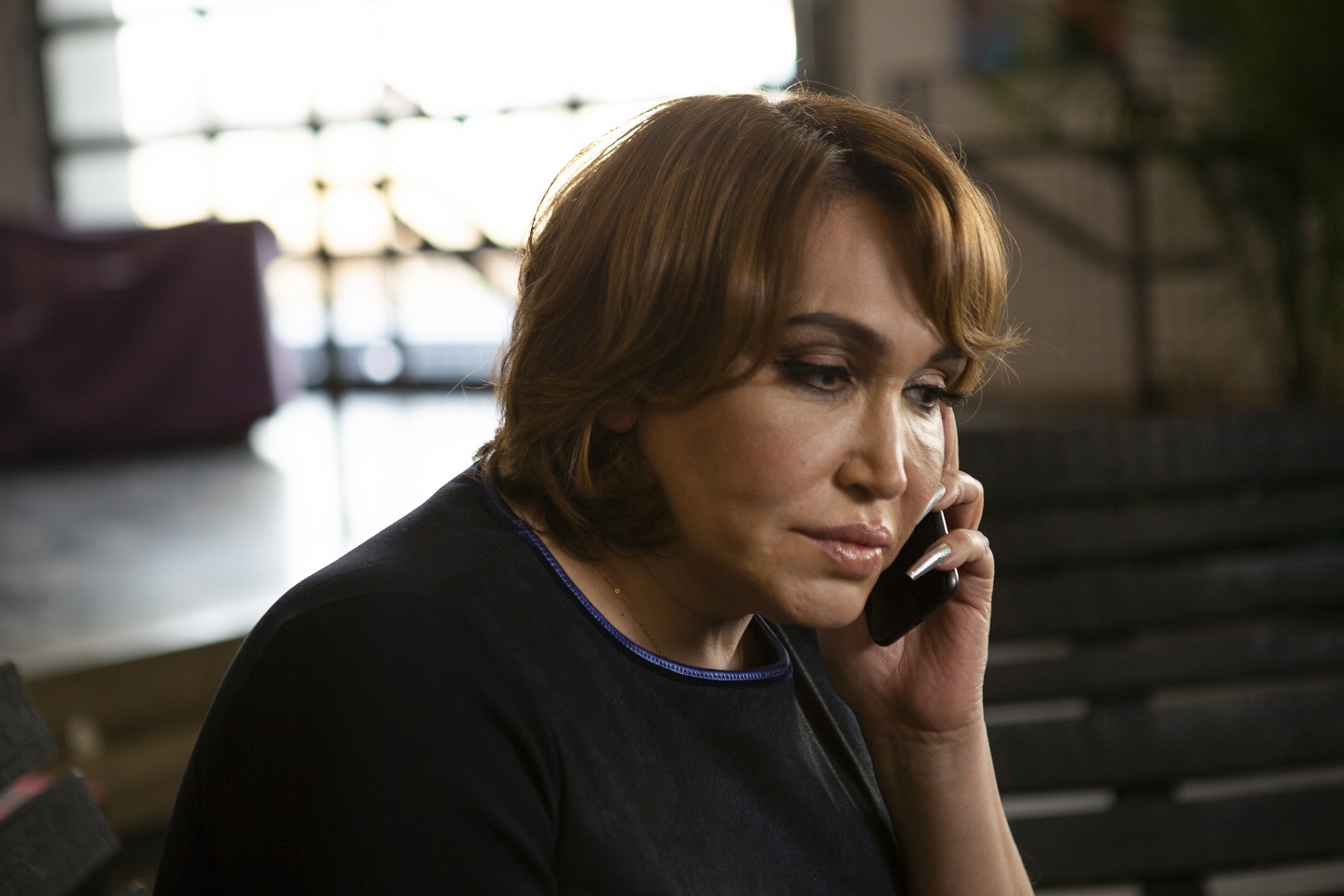
Access to resources
- Out of the total number of survivors that participated in The National Coalition of Anti-Violence Programs (NCAVP) LGBTQ and HIV–Affected Intimate Partner Violence in 2015, 27% attempted to access emergency shelter. Of those who attempted to access shelter, 44% were denied. The most commonly reported reason that survivors were denied shelter was barriers related to gender identity (71%).
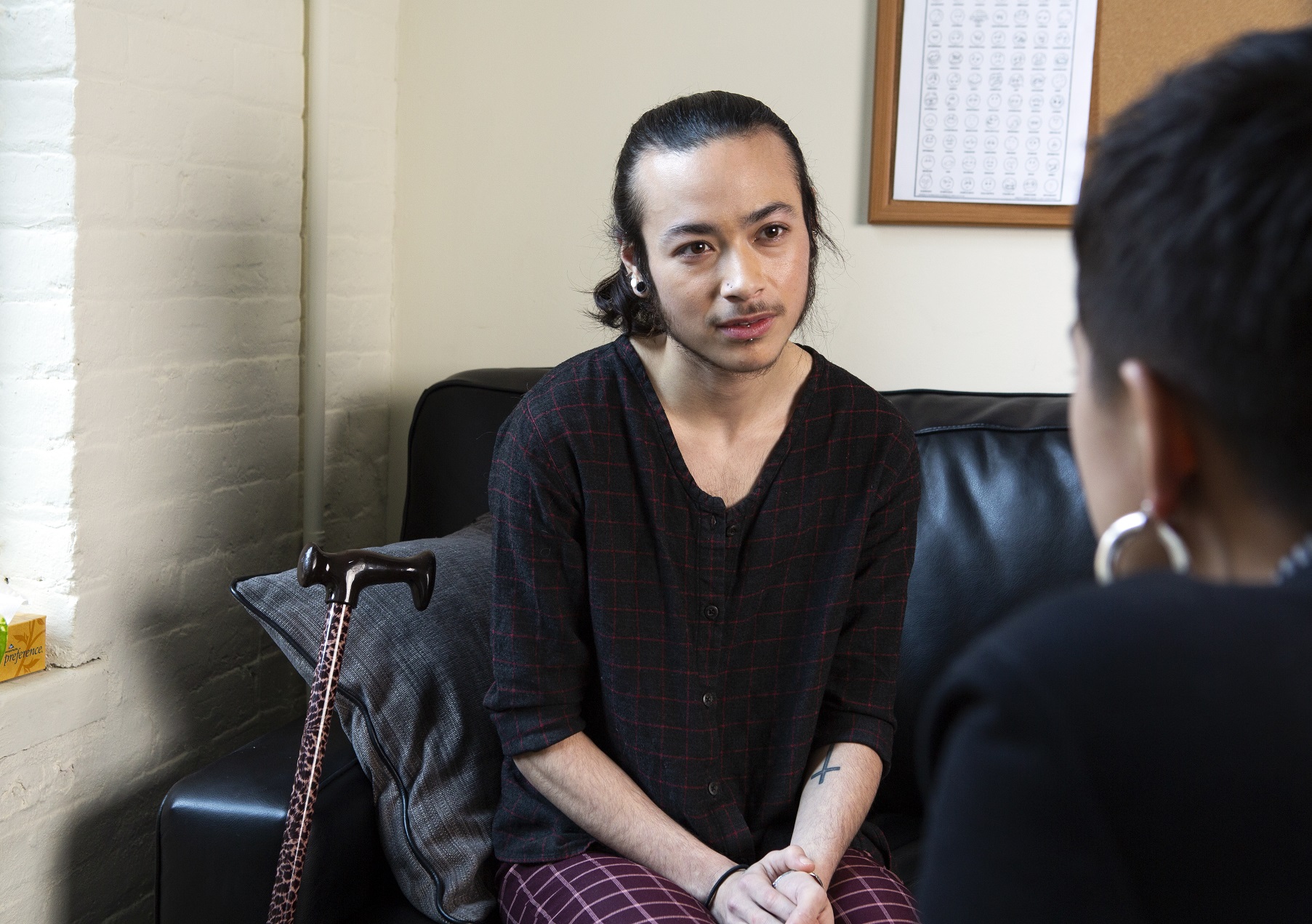
Homophobia and transphobia compound abuse
“These communities experience high rates of job discrimination, housing discrimination, police violence, and other forms of violence and discrimination, which makes them more vulnerable to experiencing violence in their relationships and creates extensive barriers to accessing support. In order to support healthy LGBTQ relationships free from violence, it’s vital to understand the unique ways that survivors’ multiple identities and experiences impact their experiences with IPV.” —NCAVP LGBTQ and HIV–Affected Intimate Partner Violence
Abusive partners in LGBTQIA+ relationships use all the same tactics to gain power and control as abusive partners in heterosexual relationships — physical, sexual or emotional abuse, financial control, isolation and more. But abusive partners in LGBTQIA+ relationships also reinforce their tactics that maintain power and control with societal factors that compound the complexity a survivor faces in leaving or getting safe in an LGBTQIA+ relationship (The National Domestic Violence Hotline).
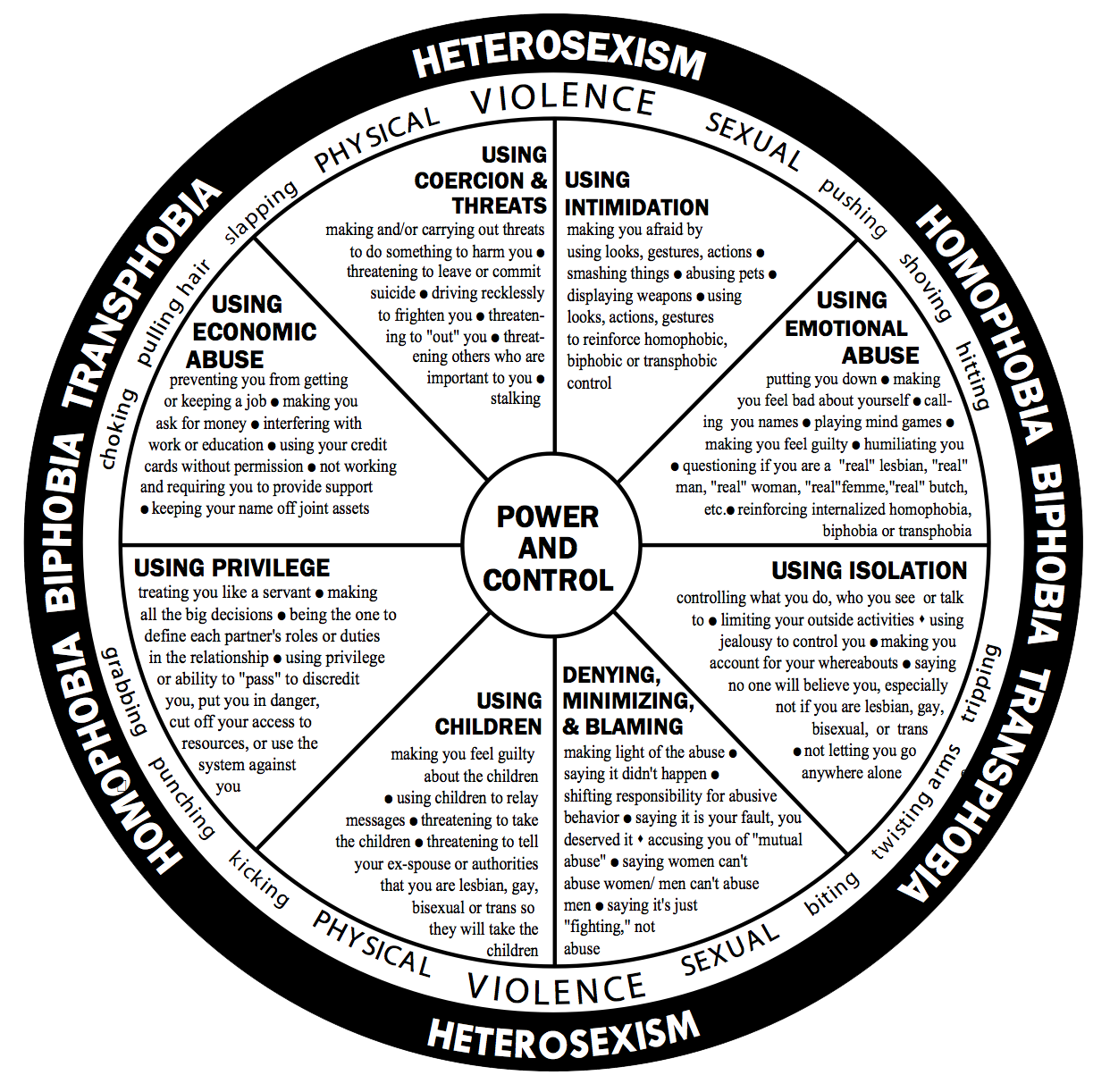
LGBTQIA+ youth comprise a significant portion of the homeless population
- 1 in 10 young adults (18-25) experience homelessness in a year (Chapin Hall).
- LGBTQIA+ young adults are more than twice as likely to experience homelessness as their non-LGBTQIA+ peers. They are also at greater risk for experiencing high levels of hardship, including higher rates of assault, trauma, exchanging sex for basic needs, and early death (Chapin Hall).
- LGBT homeless youth represent up to 40% all young people experiencing homelessness. Considering that LGBT youth represent an estimated 7% of the total youth population, these numbers are disproportionately high (The True Colors Fund).
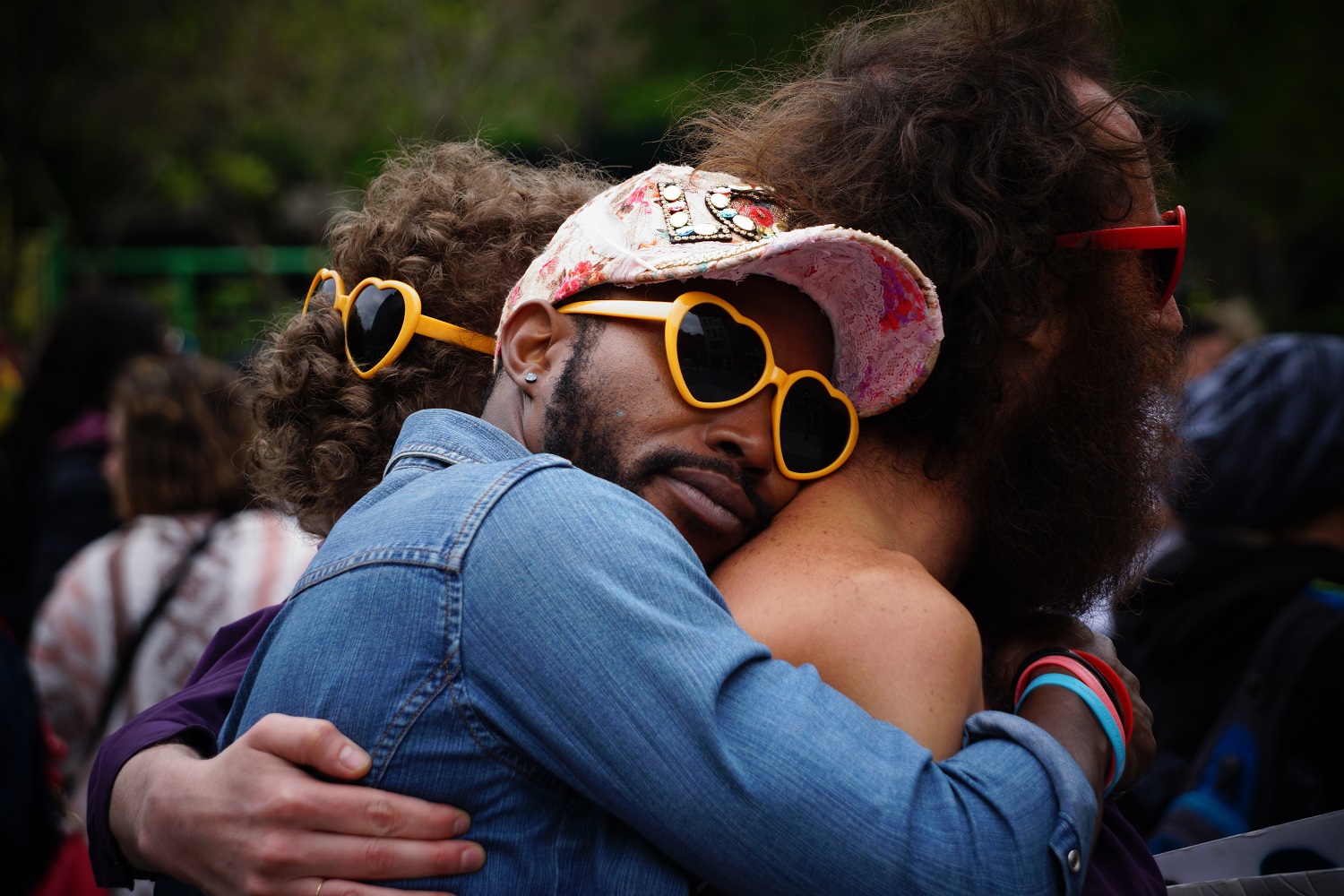
Race, immigration status, disability status, and more make LGBTQIA+ people even more vulnerable
- Once they are out of their homes, LGBT youth are even more vulnerable. They are at a greater risk for victimization, unsafe sexual practices, and mental health issues than non-LGBT young people experiencing homelessness (The True Colors Fund).
- The majority of LGBTQ+ survivors reporting experiencing IPV to NCAVP member programs were survivors of color, particularly Black/African American survivors and Latinx survivors. LGBTQ+ survivors of color, particularly transgender people of color, are more likely to experience certain economic and social inequities that make them more vulnerable to experiencing IPV (NCAVP LGBTQ and HIV–Affected Intimate Partner Violence in 2015).
- LGBTQ+ undocumented survivors continue to experience particular vulnerabilities as it relates to IPV (NCAVP LGBTQ and HIV–Affected Intimate Partner Violence in 2015).
- In 2015, about a quarter of the survivors who reported information on whether or not they had a disability to NCAVP reported having some type of disability. Survivors with disability were two times more likely to experience isolation and four times more likely to experience financial abuse (NCAVP LGBTQ and HIV–Affected Intimate Partner Violence in 2015).

Doorways for LGBTQIA+
Doorways is committed to creating an environment that provides culturally competent and inclusive services that are non-stigmatizing to all clients regardless of race, ethnicity, sexual orientation, sex, gender and gender identity or expression, religion, national origin, age, or disability, as well as to others from diverse backgrounds.
- We welcome and serve all clients who access services, including clients of all sexual orientations, including, but not limited to, those who identify as heterosexual, gay, lesbian, bisexual, asexual, pansexual, and questioning, as well as gender-conforming, gender non-conforming, nonbinary, transgender, and transitioning individuals.
- We respect your identity/ies, name and pronouns.
- We welcome staff, board members, volunteers and clients irrespective of race, sexual orientation, sex, gender and gender identity (or expression), religion, national origin, age, or disability, as well as others from diverse backgrounds. Many of our staff are LGBTQIA+.
How we’re making our space safer
- All staff and volunteers complete 40+ hours of Doorways core training that includes curriculum focused on working with LGBTQIA+ survivors.
- We continue to engage in improving practices that are inclusive and welcoming of all victims. Staff attend ongoing trainings to learn and to help us continue to improve our response to those who identify as LGBTQIA+.
- We have updated intake forms and other documents to be open-ended for gender identification and (preferred) pronouns.
- New literature and brochures include the safe zone symbol to help improve access to our services for those who identify as LGBTQIA+.
- We have incorporated more inclusive language in our assessments.
- We seek ongoing feedback from our clients to continue to improve our programs and services.
Additional LGBTQIA+ Resources
Local, Commonwealth, and National
Arlington County, in partnership with the Human Rights Commission’s Equality Task Force, recently launched a webpage with local, state, and national resources for those who identify as LGBTQIA+. Visit the page for further information.
“Arlington has long been a community that strives to embrace and equitably serve our diverse population that includes people from all walks of life – including those who identify as LGBTQ. We prohibit discrimination based on race, color, gender status, sexual orientation, ethnicity, religious observance, physical or mental ability and any other characteristic subject to marginalization. Our vision, which asserts that each of us is important, means that ours is a community where diversity is not simply tolerated, but appreciated and respected.
Arlington County is an inclusive, welcoming community where everyone is valued and respected and has the opportunity to live out their dreams.”
